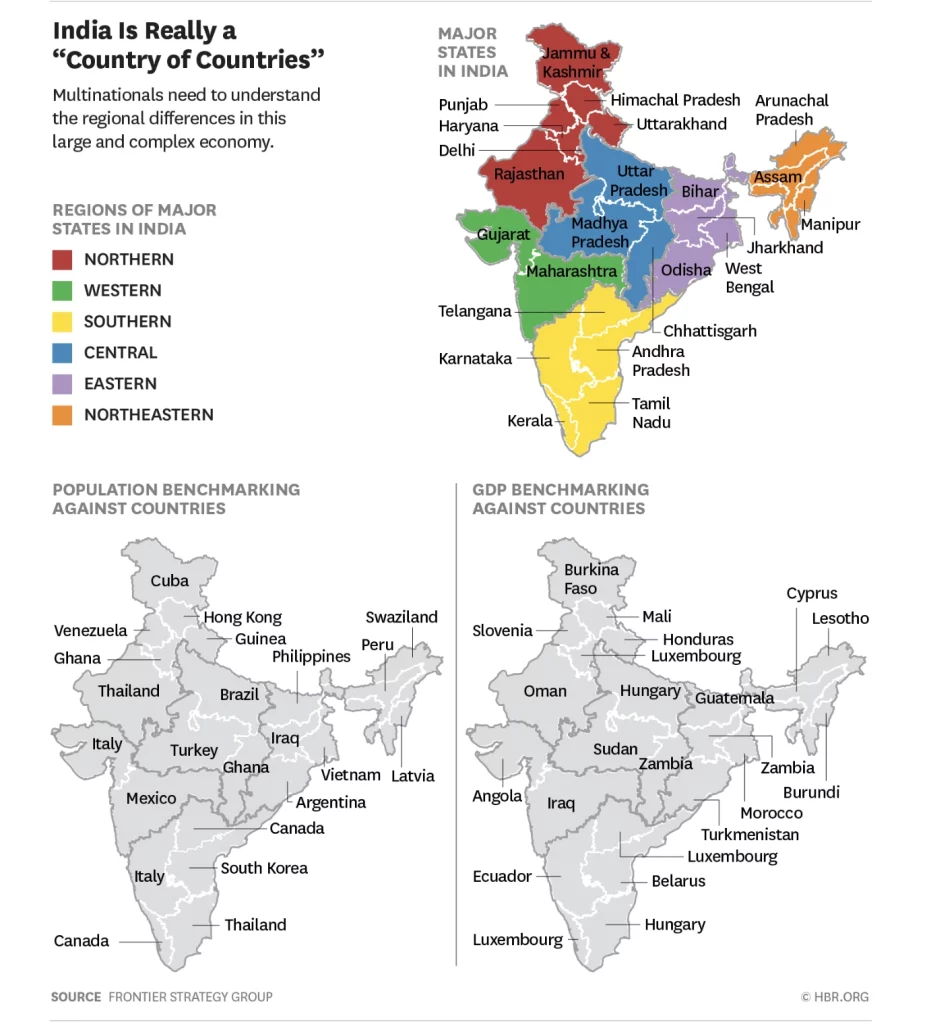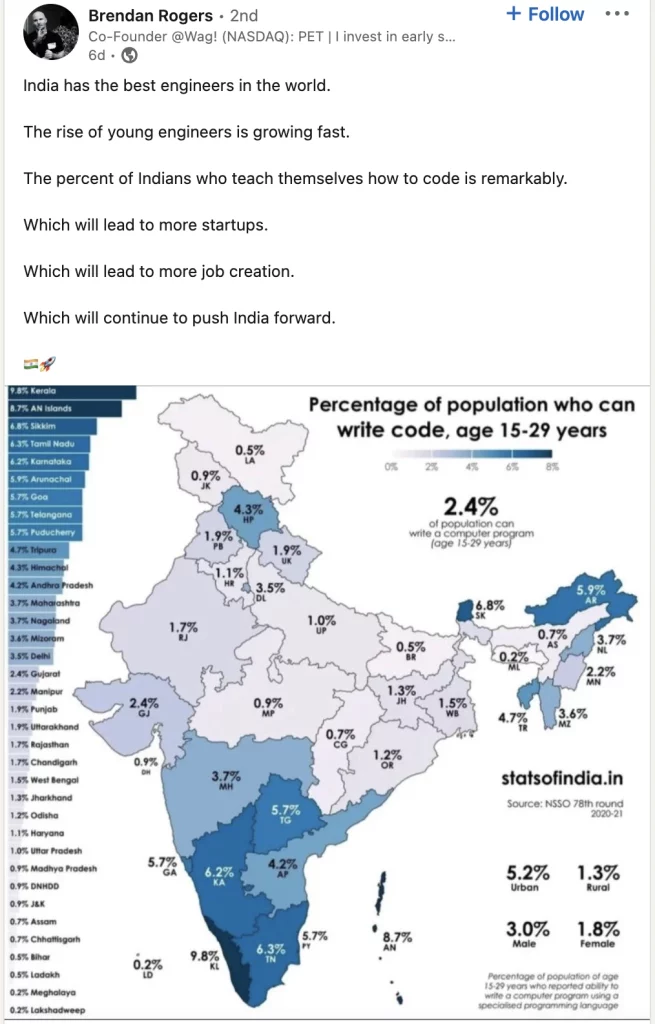Last month in December ’23 I travelled again to South India to investigate the manufacturing landscape there compared to China and, besides spending time in our office in Dharwad, I took a week to explore Bangalore (a key manufacturing hub for electronics and the IT industry). If India is on your radar, I also share some advice about getting around in this vast country.
China to India: from one extreme to another
- Chinese people tend to try and get to the point and “just do it”, and they don’t spend an enormous amount of time thinking of the consequences of their actions.
- Or, at least, that’s true when compared with Indian people…who tend to be more considerate about their surroundings and about the impact of what they do.
- Let’s take the example of driving. Chinese drivers don’t pay much attention to others on the road, to the point where one has to constantly watch out for others and it’s quite tiring… while those in India are much more careful — that translates into much fewer serious accidents (from my anecdotal observations) but also lower speeds. Getting something done in India generally takes longer.
- There are, of course, similarities, particularly in their governments’ tight control over certain things. In both countries, one cannot go into an airport terminal without showing a valid ticket; hotels have to check the passport details and the visa of the foreigners they receive, and the list goes on and on.
Exploring Bangalore
- It is a huge city (about 13 million people), and it certainly feels quite crowded.
- In IT jobs, I am told most workers come from outside the state. Bangalore attracts talents from all over the country.
- Airport Terminal 2 is modern and well-equipped. It feels a bit like the Dubai airport, in a good way. Terminal 1 is good, too.
- There are 2 metro lines, with work underway to open a few more. That’s great, as road traffic can be rather frustrating. There seems to be heavy traffic almost all of the time, so it’s more convenient to try and remain in the same neighborhood if possible
- One of the most developed areas is Whitefield, on the West side of the city. It includes nice modern areas, big shopping malls full of (predominantly American) brands, and a lot of IT outsourcing service companies. It is served by the Purple metro line.
- Another big IT hub is Electronic City, on the Southwest side.
- I spent a weekend in the downtown area, which is pleasant. Plenty of large parks and good cafes & restaurants.
- The gig economy is well developed, and getting an Uber or Ola driver is easy and quick…unfortunately, that’s not true of smaller cities (even those of 1 million people).
- There is some manufacturing around the city, and some hardware R&D centres, but they are dwarfed by software development and related activities.
- Most major testing labs have a presence in Bangalore and have all the usual facilities for electrical safety, EMC, etc. TUV-Sud just opened a new lab (15 million EUR investment) there, for example.
- One can feel the city is growing. Plenty of construction, including a lot of premium/luxury housing.
Traveling within India: Tips
- Most hotels are not on Agoda or Expedia and they don’t accept foreign credit cards, so cash is king if you don’t have local employees setting things up for you. You might need to bring some cash with you into the country, as withdrawing from a random ATM sometimes works and sometimes doesn’t.
- Not having a local phone number also blocks certain possibilities (such as applying for certain metro cards), and sometimes it can even prevent getting wifi in a hotel (but that’s not a common issue).
- The big international hotel chains tend to focus on tier-one cities, but online travel agents like Agoda or Expedia still offer some hotel options, and you can pre-pay the room charge with your international credit card to avoid the “oh, foreign cards don’t work” issue. Same thing for flights – most airlines won’t allow you to book directly, but you can book indirectly, for example on Expedia.
- Do not trust the hotel reviews in general. There is a widespread tendency for customer service staff (at the airport, in hotels, …) to ask customers to write a review on the spot, sometimes in a slightly pushy way, and that results in a lot of positive reviews that may overlook critical issues.
- In some cases, an American Express card can be more useful than a Visa or MasterCard, as certain regulations require a one-time password on every transaction in a way most cards can’t accommodate (but conveniently it shows up right away in the AmEx app).
Articles and graphics about managing an Indian workforce
If you are planning to, or are already manufacturing in India, these articles and graphics I’ve found will help shed some light on how to manage workers there.
- You Don’t Need an “India Strategy” — You Need a Strategy for Each State in India

On the surface, the Indian economy looks like an attractive investment destination for multinational corporations. But it’s one of the most difficult markets for multinational firms, with bottom-line growth a perennial challenge. The main reason for the poor performance is a complex and unpredictable regulatory landscape. If multinationals want to succeed in India, they need to better understand the market – and this means understanding individual states and their business environments in a lot more detail. This article includes interesting facts and graphics about the different states to give foreign investors and businesses a grounding in what they’re like as a base. - The Globe: The Battle for Female Talent in Emerging Markets – Women in emerging markets face unique challenges. This presents a major problem for multinational companies whose hopes for growth are pinned on emerging markets. They face a cutthroat war for talent, despite the enormous labor forces of the BRIC countries. This article delves into the challenges they and you will face but also offers some illuminating thoughts on how to hire and retain talented female employees in countries like India.
- India is a booming market for coders, as you can see from this graphic (shared by Brendan Rogers on LinkedIn), so if software development is important for you, it’s a great market to explore:

Notice how the density of people becoming skilled in coding is concentrated towards the south where Bangalore is situated.


